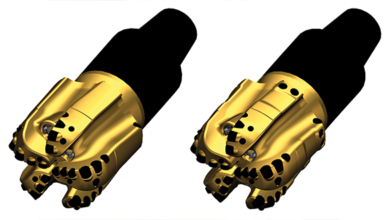Drilling & Completion Tech Digest
Available now: Drilling Systems automation roadmap report
A first-of-its-kind drilling industry technology roadmap report was publicly released on 1 June. The report, for drilling systems automation through 2025, was developed by a global group of 50 industry experts affiliated with IADC, SPE, AUVSI, Energistics, Southwest Research Institute and OPC Foundation.
The report can be downloaded for free online and covers 14 sections: overview and executive summary; introduction, processes and scope; vision and needs; current state/future state 2025; systems architecture; communications; sensors, instrumentation and measurements; drilling machines and equipment; control systems; modeling and simulations; human systems integration; standards and certification; contingency management; and summary observations.
Autotripping system tests conclude on Noble Globetrotter II
Noble Corp and Huisman have concluded the final tests of an automatic tripping system (autotripping) onboard the Noble Globetrotter II drillship. During the tests, the system’s performance was proven by tripping 30,000 ft of drill pipe. Even in sea conditions with wave heights up to 6 m, the system proved reliable.
The system allows for fully automated tripping in and out cycles, including all related equipment. Systems, such as both pipe rackers, setback drums and the drawworks, are controlled in parallel, increasing operational efficiency by 24%. During tripping, the driller can focus on the drilling process and can choose what operational steps are confirmed. No personnel is required on the rig floor during this fully automated tripping operation.
Internet bandwidth requirements drive new satellite-based services, solutions to support digitalization transformation
Equipping rigs in remote locations with reliable satellite services for streaming and real-time data transmission is a frontier challenge for advancing the industry’s digital transformation. Particularly as services like remote equipment monitoring and maintenance gain momentum, data-transmission bandwidth requirements are also increasing exponentially.

Looking not at what the industry needs right now but what it will need years in the future, UK-based satellite communications company Inmarsat is planning new satellite launches every year for the next three years in order to add capacity to its network. These launches will add to the 13 geosynchronous satellites that it has in orbit right now.
The company recently also launched Fleet Xpress (FX) platform, which was developed to help drilling contractors as they move to digitalize their operations, said Chuck Moseley, Sales Director for Offshore Energy Maritime with Inmarsat.
The platform combines two satellite technologies, the Ka-band and the L-band. The former is the primary bandwidth provider, and Inmarsat chose this technology over the Ku-band because the company believes it has much more growth potential, according to Mr Moseley.
“It wasn’t that long ago when you had 1 MB service to your house, and you thought it was great. Now you would be unhappy if you had less than 20 or 30 MB,” he said. Looking to the future, Inmarsat said that speeds over 400 Mbps could be possible. “No one has asked for that yet. No one’s even asked for 100 Mbps, but we think that’s coming.”
L-band, on the other hand, delivers very low bandwidth, yet it is very weather resilient. Inmarsat incorporated this technology into FX to provide a backup connection for improved overall reliability.
FX incorporates several solutions that are targeted toward serving “digital vessels”:
• Fleet Edge: a fail-over device to manage going from Ka-band to L-band.
• Fleet Secure: provides unified threat management and end point security.
• Fleet Data: a sensor-agnostic central collection point for data coming in from sensors on the rig.
• Fleet Hotspot: allows rig crews to purchase bandwidth for personal use while on the rig. “The crew can go in, secure their own access as much or as little as they want, over what is already provided for them, and no one has to help. It’s not an administrative task,” Mr Moseley said.
• Charterer plans: allows oil companies to purchase additional bandwidth outside of the drilling contractor’s allotment.




